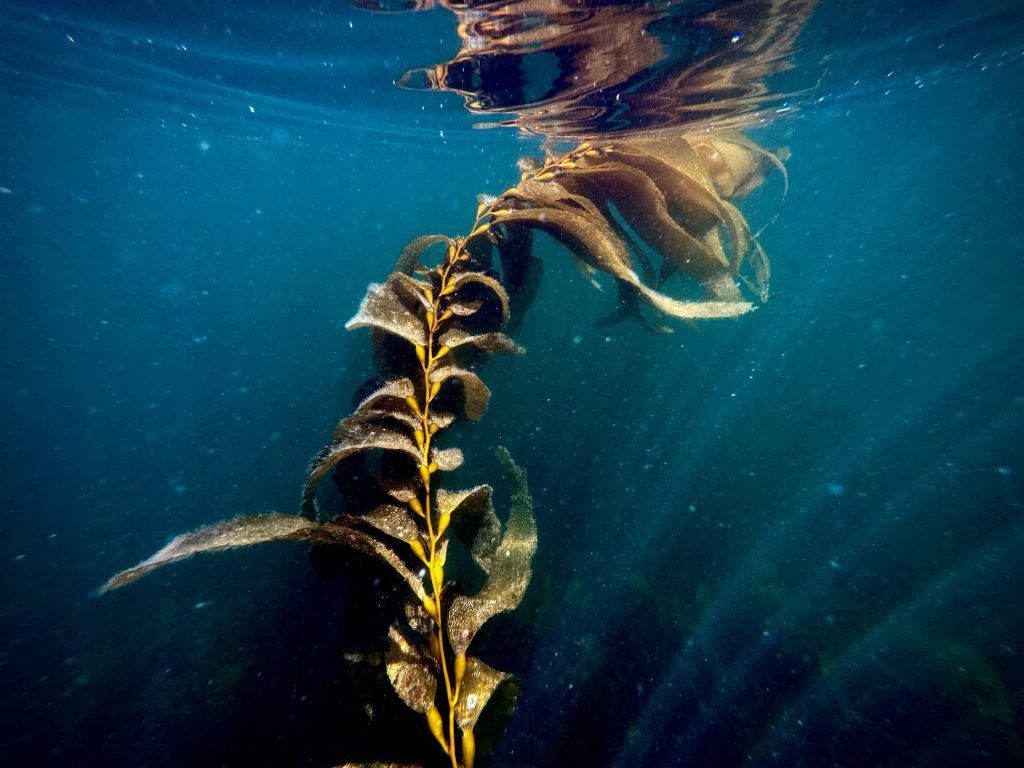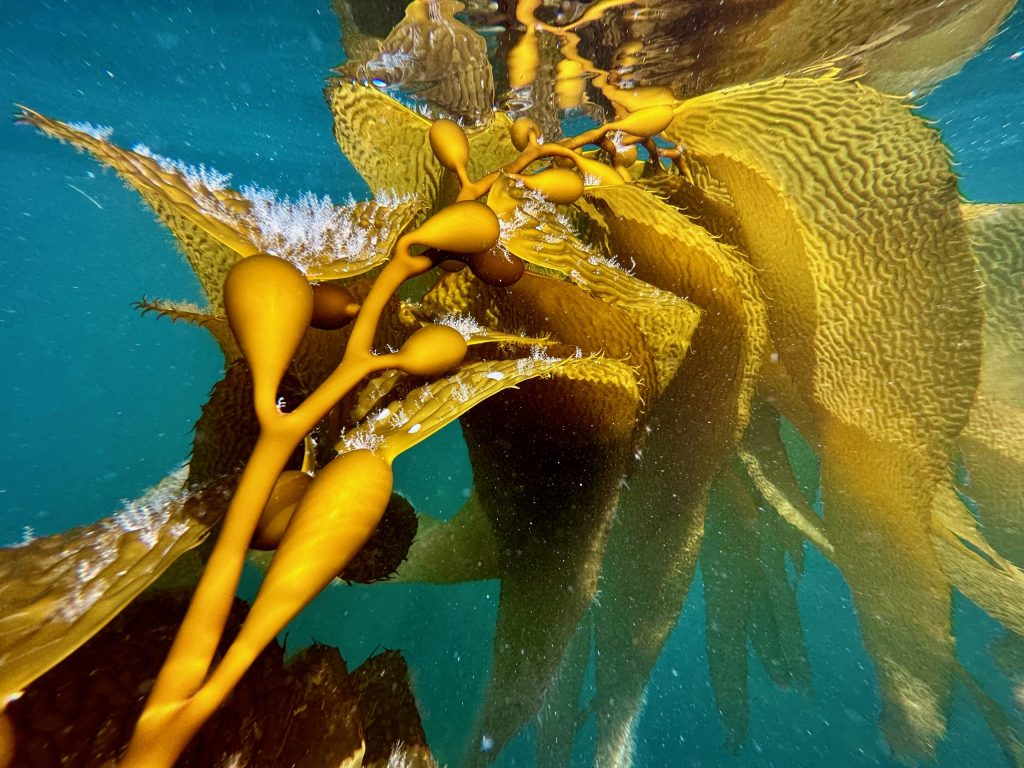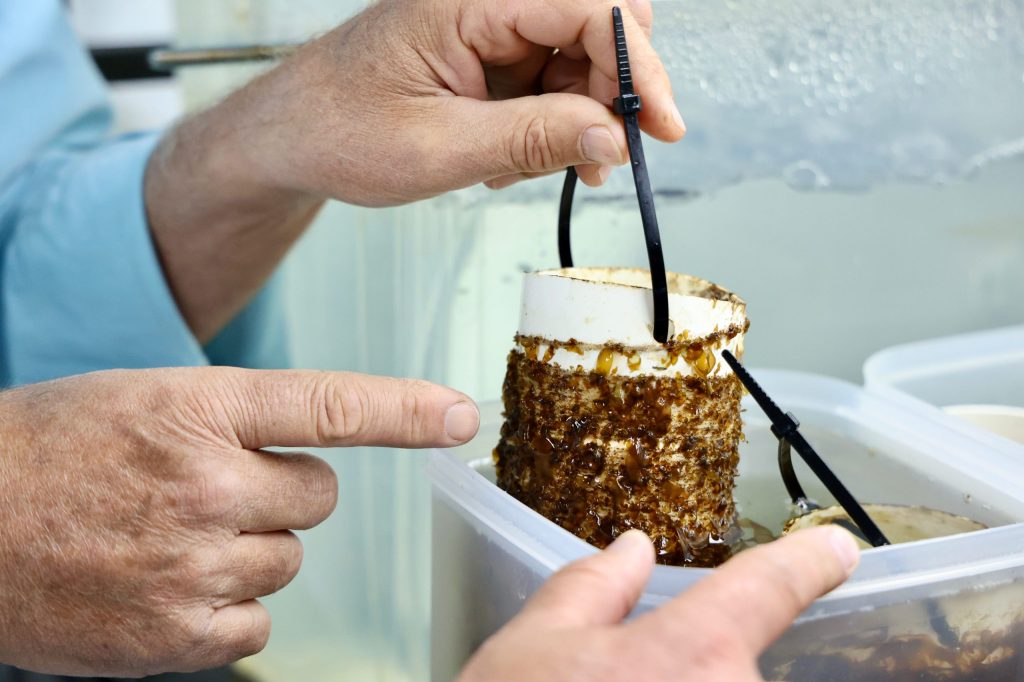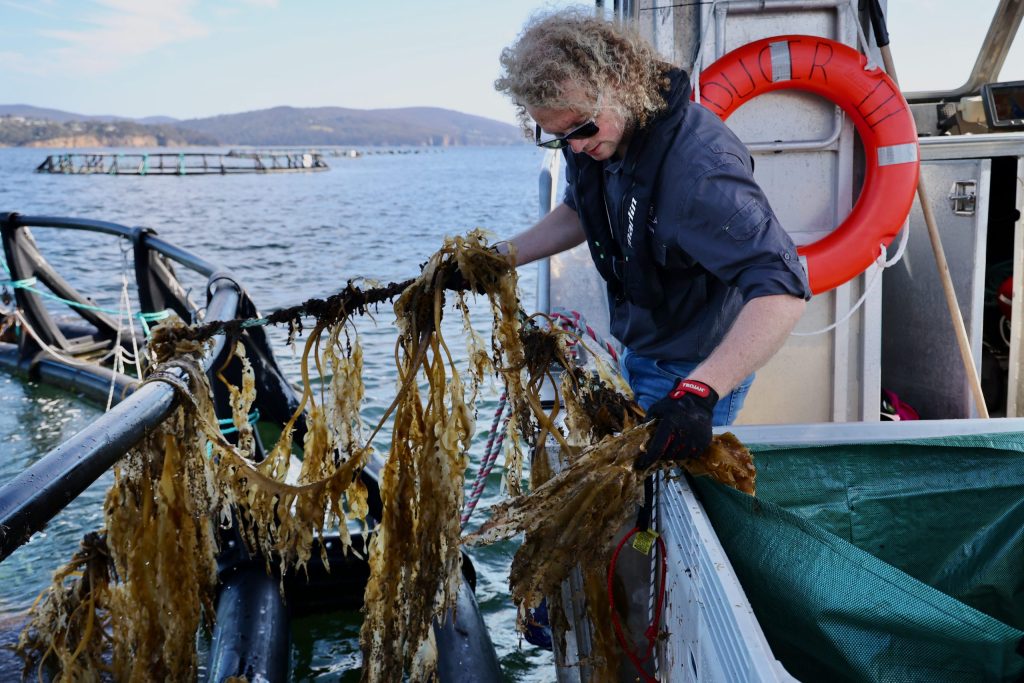Tasmania’s coastal waters were once home to thriving Giant Kelp forests, scientifically known as Macrocystis. These colossal seaweeds played a vital role in Tasmania’s marine ecosystems for centuries. Towering up to 35 meters in height, Giant Kelp provided shelter and sustenance to a diverse array of marine creatures including fish, molluscs, crustaceans and other species.
Just like large trees on land create wind barriers, Giant Kelp forests are crucial in buffering coastlines from erosion. The thick forests not only slow the water movement, they also catch the drifting spores and larvae of a variety of organisms, like rock lobster and kelp, and help them to settle on the seabed to grow.
Giant Kelp forests are a major contributing factor to the overall health of our ecosystem. They maintain water quality by absorbing excess nutrients, sequester carbon dioxide and slow down ocean acidification and produce up to 100 times more oxygen than a terrestrial forest of equivalent size.


Unfortunately, there has been a dramatic decline of Giant Kelp forests in recent decades. Research has shown that since the 1960s 95% of Giant Kelp forests have disappeared on Tasmania’s east coast. This resulted in Giant Kelp to be listed as an endangered community by the Australian Government in 2012 – the first such listing for a marine community in Australia.
The dramatic decline of Giant Kelp Forests is primarily due to Tasmania’s east coast ocean water temperature rising at three to four times the global average. Eddies that spin off the EAC and south towards Tasmania are larger and more frequent, resulting in warmer, nutrient poor water. Giant Kelp however typically needs cold, nutrient rich water to grow. The warming waters bring non-native invasive species to the area, like the long-spined sea urchin (Centrostephanus rodgersii) which is responsible for destructive overgrazing of Giant Kelp forests.
Over the last few years, the Australian Government, scientists, and nature conservation organisations have been working on management strategies and solutions to restore the Giant Kelp Forests along Tasmania’s east coast.
Researchers from UTAS have cultivated Giant Kelp that tolerates warmer and more fluctuating ocean temperatures. In collaboration with dive operators, they have been working on replanting the kelp seedlings manually.
Governmental management strategies are in place to control the long-spined sea urchin population by supporting the commercial dive fishery, recreational dive community and research programs and by increasing the lobster population through the East Coast Rock Lobster Stock Rebuilding Strategy.


We have identified various locations worldwide where human operations have negatively impacted seabeds and marine habitats, and local businesses and governments are actively seeking opportunities to rewild the coastal waters and look for positive impact investing strategies.


Advancing sustainable business and operational practices around the world by harnessing and transforming information into knowledge and reshaping risk into positive impact and value.
Next Wave Seaweed acknowledges the Palawa people, the Traditional Custodians of lutruwita (Tasmania) and Tasmanian Sea Country. We pay our respect to Elders, past and present.
We’ve evolved! Our new name, Next Wave Seaweed, reflects our expanded mission to drive sustainable seaweed solutions.